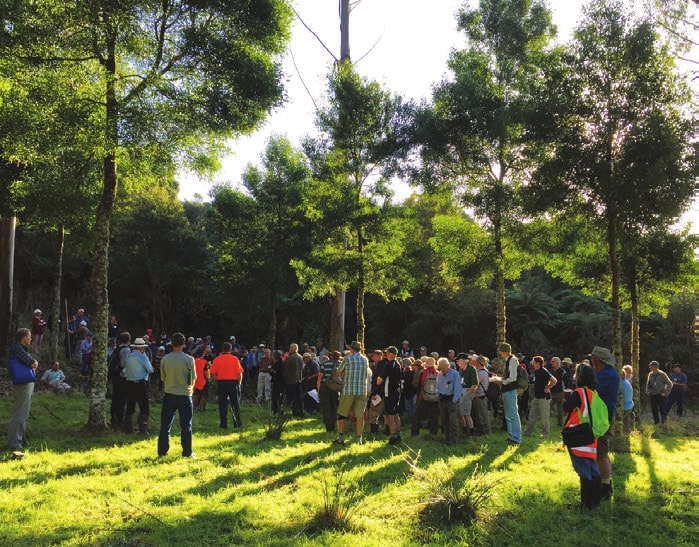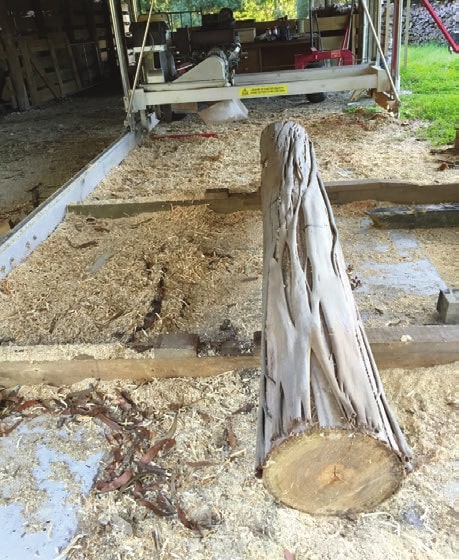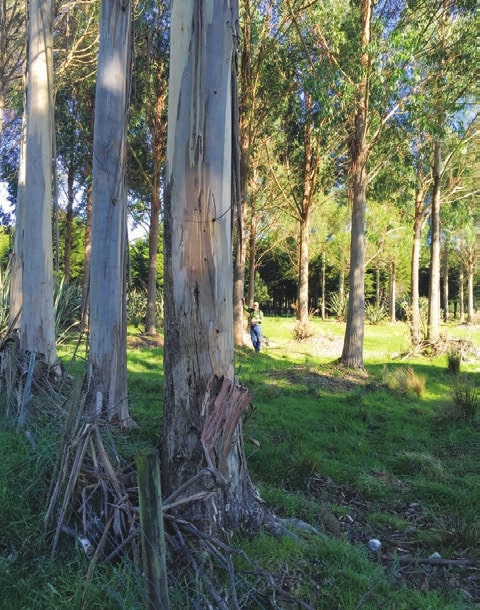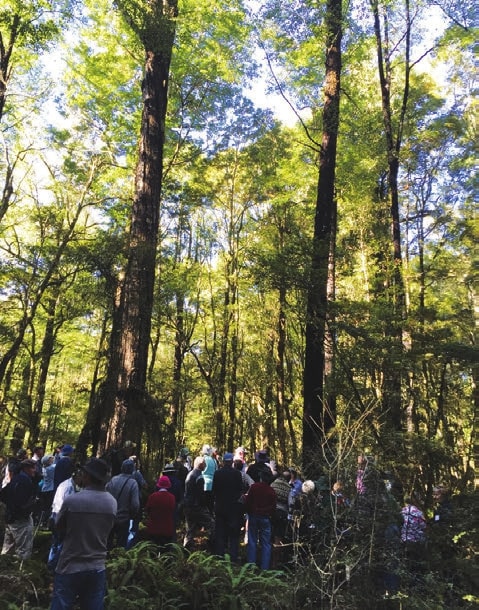The Hokitika Conference - Some impressions from an Australian delegate
Carol Neal, New Zealand Tree Grower August 2016.
I was fortunate enough to attend the NZFFA Conference in Hokitika earlier this year. I was so impressed with the NZFFA structure and membership that I felt it important to extend my congratulations and share some, although only a small number, of the many highlights of the week.
I am a member of the Australian Forest Grower Association, and also a member of a group of small-scale growers, the Specialty Timber Growers group. Our group extends from north Queensland to northern New South Wales, with the largest number of members concentrated in southeast Queensland.
I noted that membership in New Zealand consists mostly of small-scale growers, and was encouraged by the fellowship, interaction and cohesion between them. Many small-scale growers in my region remain in isolation and are unaware of the importance of sharing information, experiences and support from fellow growers and organisations. The NZFFA model is well worth replicating.
Courageous and inspirational West Coast growers
I commend West Coast growers for their courage and tenacity in developing farm forestry in their challenging geological and climatic conditions. Growers plant over the hard ironpan layers which prevent water movement into the loosely aggregated gravels below. Waterlogging on most of the flatter land creates a thin layer of peat near the surface and an infertile, acidic, structureless layer of silt below.
These soil types are challenging and costly for tree farming. During plantation establishment phase, most growers have undertaken the expensive operation of flipping and mounding by bringing the loose gravel, sometimes at three to four metre depths, along with mineral pans to the surface. Other site preparation techniques involve humping and hollowing – digging large trenches to break through the hard pan and provide drainage with the fill from the hollows used to create large mounds or humps in between the hollows, or V-blading to break up the hard pan and create mounds. Trees are planted on these mounds. The cost of fertilisation adds to establishment and management costs.






Field trip highlights
In addition to visits to places of historical significance, mills and national parks, the conference consisted mostly of field trips hosted by growers. Below are what I thought were some good examples of the resilience and innovation of these West Coast growers.
- Susi Thompson and Rob Danford of Korimako took a multi-purpose approach by adding fruit trees and undertaking trials of exotic timber trees to their 24-year-old radiata plantation. Regenerating native ferns are retained in the understory. New plantings are fenced off to keep their animal stock out.
- Catherine van Paassen and Glenn Crickett at Viaduct Creek shared results of their Eucalyptus nitens and Tasmanian blackwood. They are not afraid to disclose failures as well as share their successes. A great attribute in helping fellow growers. Poor form eucalypts are milled for firewood with a sawmill as a source of income. The mill is also good training for Glenn for when serious timber processing begins.
- Jack and Kay Davidson’s diverse property is at Arahura Valley. It consists of Eucalyptus nitens and other exotic tree plantings in addition to timber species for bee production and stock food for his cattle. Jack and Kay have also covenanted an area of a regenerating native podocarp forest under the QEII Trust. This is a good example of a whole farm management.
- I had a personal interest in this next property which consisted of second rotation beech species at Ken and Robyn Ferguson’s Waipuna Station in Grey Valley. The red beech cupboards in my little cottage in Australia are manufactured from heli-harvested New Zealand red beech. In New Zealand this timber seems to be of limited market demand. The tough, durable wood properties are considered to be a lower grade and has historically been considered only suitable for construction. However, from a personal perspective this species has proved to be very attractive furniture grade timber. Although the forest has historically been sustainably harvested, density is such that considerable effort and cost to may be required to reduce stand density.
- Finally, Jon Dronfield, manager of NZ Sustainable Forest Products Sawmill and Veneer Plant at Reefton gave us insight into the end-product and market implications. This mill services 20 native timber landowners who sustainably manage their trees. Rimu and beech extracted from native forests following Cyclone Ita in April 2014 has been processed into rough sawn board and peeled for veneer. However, an over-saturated market of rimu has left Jon with low outputs and possibly reduced value.
The NZFFA strengths
As in Australia, small-scale forests in New Zealand are quite diverse. They differ between regions according to climatic conditions, species, forest management practices and markets. It was clear from the various field days that Scion, the forestry and timber research institute, supports the NZFFA and provides up-to-date research information and funding for further research.
One of NZFFA’s strengths is that its growers have formed action groups according to their species or genus of interest. The fact that the groups conveniently meet at the annual conferences guarantees good attendances. The large attendance, of over 200 delegates, is testimony to this cohesion and cooperation which is generated by the growers.
Finally, congratulations to the West Coast committee and volunteers, for an excellent and well run conference. It reminds me of the analogy of the duck gliding on smooth waters, and with little legs paddling like crazy underneath. The organisers saw the little legs paddling, but we delegates’ saw the duck on smooth waters.

 Farm Forestry New Zealand
Farm Forestry New Zealand